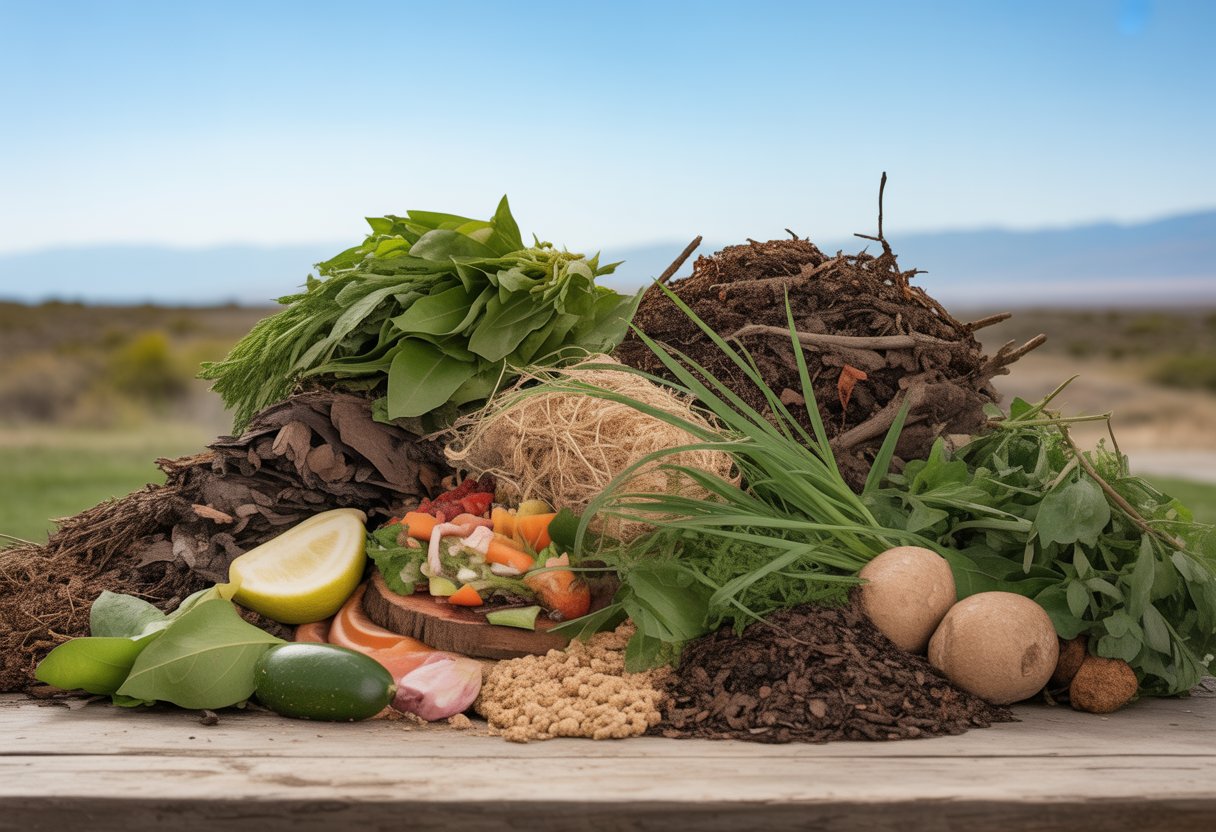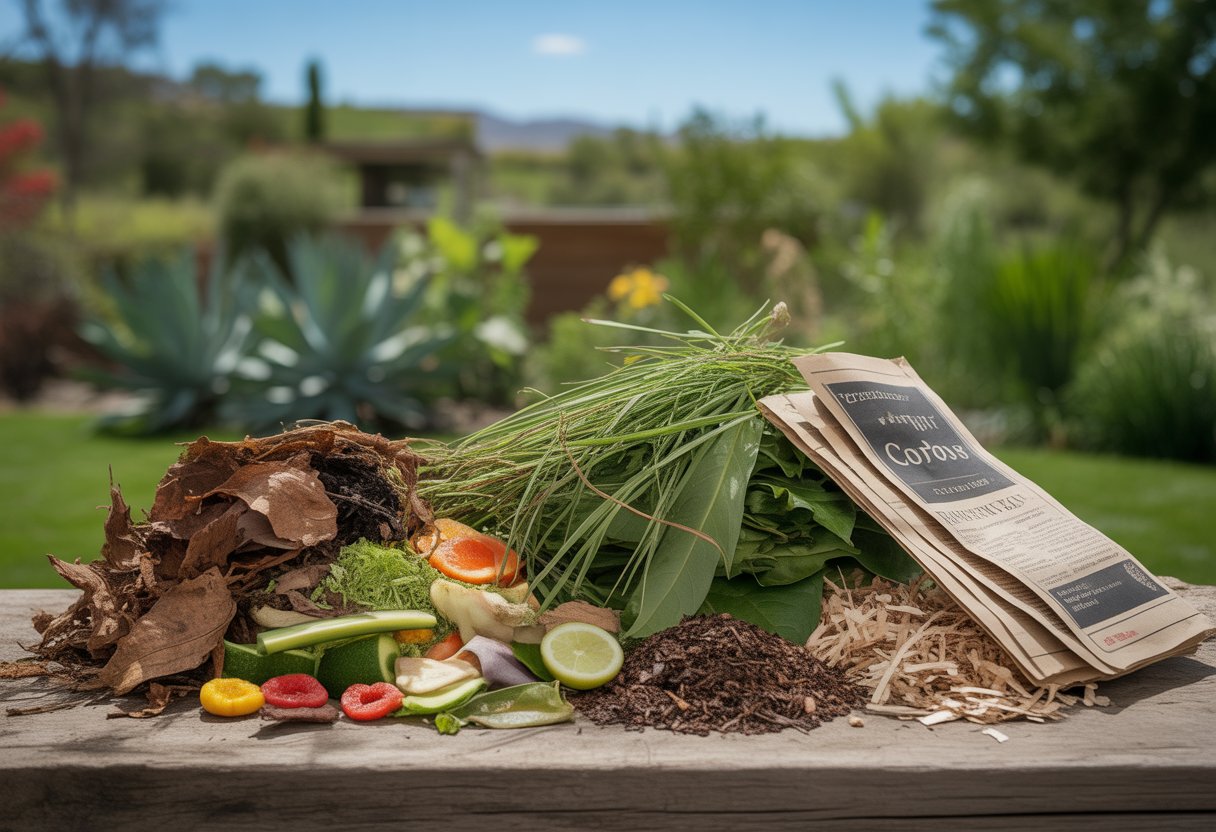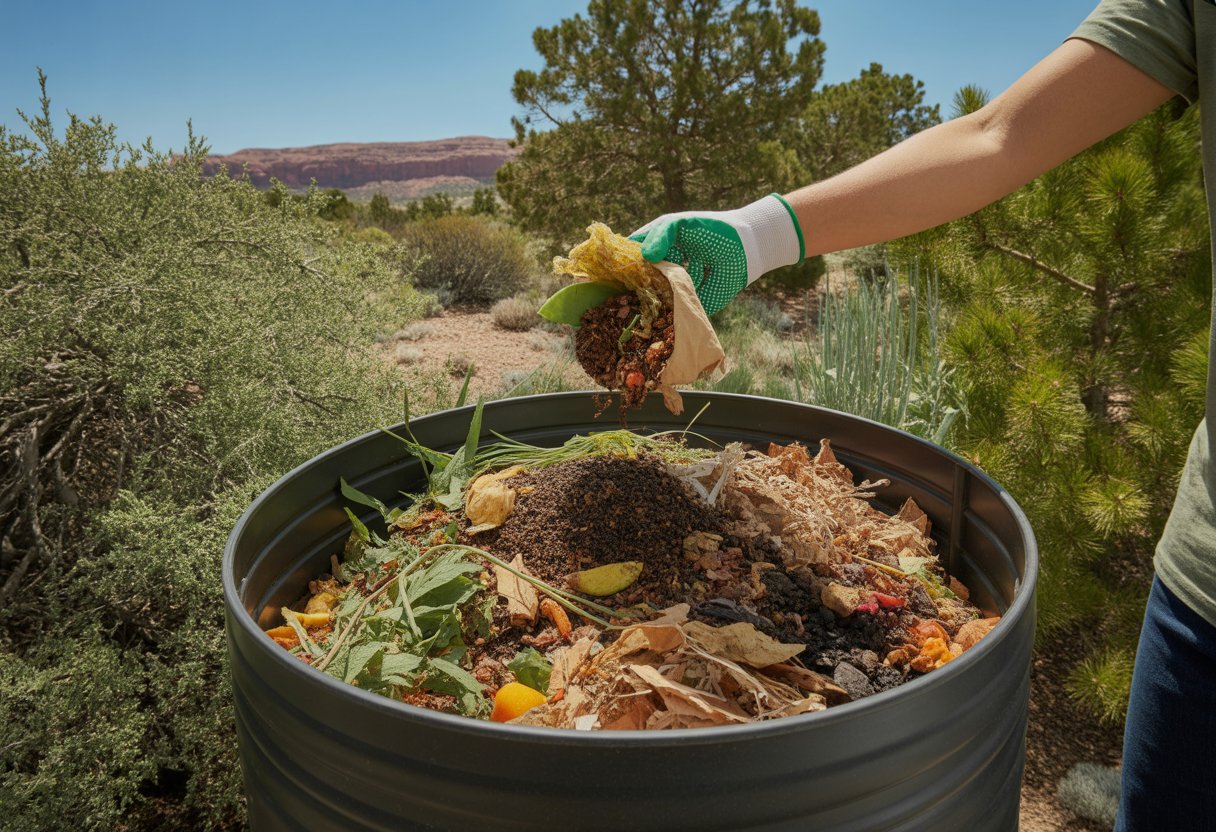Best Compost Materials for Utah: Top Organic Choices for Optimal Soil Health
Composting in Utah isn’t always straightforward. The dry climate and wild swings in weather mean you need to be picky about what goes in the pile.
The best compost materials balance moisture and nutrients, turning out soil that’s actually worth bragging about.

Utah composters get the most out of a mix of green kitchen scraps, dry leaves, shredded paper, and a bit of manure or grass clippings. This blend keeps the carbon-to-nitrogen ratio in check and helps hold onto moisture, which is always in short supply here.
Using local yard waste like conifer needles and cottonwood leaves makes sense, too. These materials break down well and keep your compost pile humming along, even with Utah’s tough conditions.
Essential Compost Materials for Utah Gardens

Composting in Utah means paying close attention to what you toss in the pile. You need the right mix of carbon-rich and nitrogen-rich stuff to keep things cooking and avoid a stinky mess.
Grass Clippings and Leaves
Grass clippings bring in nitrogen and break down fast, feeding the microbes that make compost happen. Let them dry a bit before adding, or you risk a slimy, smelly situation.
Leaves give you carbon and help with moisture. If you shred them, they’ll keep the pile airy and stop it from turning into a brick. Mixing leaves with grass clippings keeps the carbon-to-nitrogen ratio near that magical 30:1.
Manure and Horse Manure
Horse manure is everywhere in Utah, and it’s packed with nitrogen. It also brings in helpful microbes and adds bulk to your soil.
Always compost horse manure first—raw manure can spread weeds and even pathogens. Mix it with carbon-rich materials like straw or wood chips to keep smells down and nutrients where you want them.
Kitchen Scraps for Nutrient-Rich Compost
Kitchen scraps—think veggie peels, fruit rinds, coffee grounds—pack your compost with nutrients. These bits add nitrogen and trace minerals that plants need.
Skip the meat, dairy, and oily stuff unless you love raccoons and flies. Turn your pile now and then so kitchen waste breaks down quickly and doesn’t clump up.
Moisture-Retaining Additives and Soil Amendments
Keeping moisture in the compost is a constant battle here. Some materials can help hold water, keep air moving, and make nutrients easier for plants to grab.
Pumice, Perlite, and Sphagnum Peat
Pumice and perlite both come from volcanoes, but they act a bit differently. Pumice is heavier and holds water better, which helps with Utah’s thick, clay-heavy soils.
Perlite, on the other hand, is light and fluffy. It keeps things from getting packed down and lets water drain, which is handy if your soil is already heavy.
Sphagnum peat holds a ridiculous amount of water—up to 20 times its weight. That’s great for moisture, but it can acidify the soil and it breaks down slowly. Some plants like that, but not all.
Mulch and Coconut Coir
Mulch—like wood chips or straw—shields the soil, cuts down on evaporation, and keeps things cooler. Over time, it breaks down and feeds your soil even more.
Coconut coir, made from coconut husks, is a solid substitute for peat. It soaks up water, helps keep the soil loose, and doesn’t mess with the pH much. Coir works well in compost if you need extra water retention and air flow.
Topsoil and Moisture Retention Strategies
Mixing in some good topsoil helps the compost hold onto water. It also adds nutrients that your plants can use right away.
Combining topsoil with organic mulch and water-holding stuff like pumice or coir creates a nice, balanced setup. You’ll water less, your plants will root deeper, and your soil stays healthier even in Utah’s dry spells.
Enhancing Compost Quality and Garden Health
Some materials just make compost better—more nutrients, better structure, and a happier garden. Using compost right can also make flower beds easier to manage and keep weeds at bay.
Earthworm Castings and Coffee Grounds
Earthworm castings are like a superfood for soil. They’re loaded with nitrogen, phosphorus, and potassium, and they help soil breathe and hold water.
Tossing in castings speeds up composting and makes the end result richer. Coffee grounds add a bit of nitrogen and organic matter, and their slight acidity can balance out Utah’s alkaline soils.
Use coffee grounds in moderation. They help keep moisture in and attract earthworms, which is always a win. Earthworm castings and coffee grounds together boost nutrients and set up a lively soil ecosystem.
Weed-Free Practices for Flower Beds
Weeds steal nutrients and make gardening a pain. Using finished compost as mulch blocks sunlight and forms a barrier that keeps weeds down.
Pulling weeds before they go to seed makes life easier, too. Compost improves soil, so weeds come out with less effort. Top things off with a layer of shredded bark or straw for even better weed control.
Weed-free beds mean less work and stronger, healthier plants in your Utah garden.
Composting Tips and Utah-Specific Considerations

Composting in Utah? You’ve got to work with the local climate and geography. Keeping the pile in good shape speeds things up and keeps odors from getting out of hand.
Adapting Composting to Your Zip Code and Country
Utah’s climate isn’t one-size-fits-all. In lower elevations, like Salt Lake City (zip codes 84101-84199), hot summers mean you need to check moisture often so the pile doesn’t dry out.
In southern Utah, like St. George (84770), it gets so hot you’ll want to put your compost in the shade. Higher up in places like Park City (84060), cold winters slow everything down, so insulating your pile with straw or leaves helps trap heat.
Since you’re in the U.S., local rules or city programs might also affect what you can compost or how you do it. Always worth a quick check.
Maintaining a Healthy Compost Pile
In Utah, keeping a compost pile healthy means balancing “greens” (nitrogen-rich) and “browns” (carbon-rich). You might toss in vegetable scraps or coffee grounds as your greens, then add dry leaves or shredded paper for browns.
Aim for about 2-3 parts browns to 1 part greens by volume. Honestly, it doesn’t have to be exact, but getting close helps things break down the way you want.
Turn your pile every week or two. This gets air in there and really speeds things up.
Check the moisture often. The pile should feel a bit like a damp sponge—not bone dry, but definitely not soggy.
If it seems dry, sprinkle on a bit of water. Too wet? That can get stinky and slow everything down, so back off on watering.
Grab a compost thermometer now and then, if you have one. High temps mean those microbes are doing their thing.
